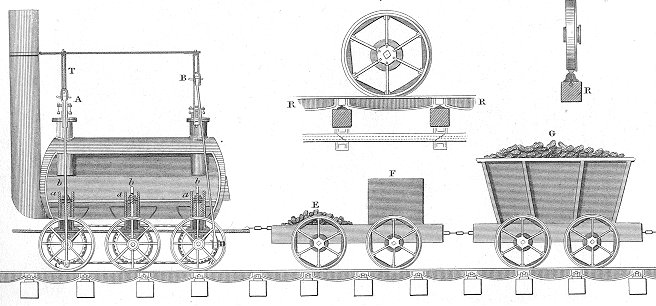Steam Engines in England
Today, a look at steam engines in 18th-century England. The University of Houston's College of Engineering presents this series about the machines that make our civilization run, and the people whose ingenuity created them.
Steam engines were England's unique gift to the Industrial Revolution. Yet they were a surprisingly minor presence during that technological revolution. Thomas Savery built a steam pump in 1698. A few years later, Thomas Newcomen built a steam engine. When Watt and Boulton began selling engines in 1776, steam had been around for seventy years and almost Six hundred engines had been built.
Watt's first engines delivered about six horsepower, little more than early Newcomen engines did. But Watt's engines were smaller and he'd soon quadrupled energy efficiency. By 1800 some Watt engines could deliver as much power as your automobile engine.
But they would, by no means, have fit under the hood of your car. Newcomen's engines stood two stories high with cylinders as large as ten feet in diameter. Watt's engines were more compact, but still huge by our standards. And they hadn't begun to dominate power production. By 1800, two thousand steam engines were running in Great Britain. Fewer than five hundred were Watt's.
In the greater scheme of things that was still small potatoes. Throughout the 18th century most power continued to come from waterwheels and windmills. Engine makers never installed more than a few hundred new horsepower each year. But the engines they did make were picking up the specialized jobs essential for the rest of the Industrial Revolution - like pumping water out of mines so we could have the coal and metals we needed.
By 1800, the total capacity of every steam engine ever built added up to the output of one of our big stationary diesel engines. Steam didn't change the English countryside overnight, but it was a stalking horse of revolution. Steam engines were agents of changes that far outreached anything their makers had ever thought of.
So steam carved its place in the power-driven, steel-shaped, 19th century. Take railways: The English never had been great road builders. For 1500 years, they'd done little to surpass their Roman road system. Then outlying tradesmen created a great canal system to move their new manufactured goods and they added horse-drawn rail links to portage goods between canals. That idea came out of the mines where tramways were used to move coal and ore.
When Richard Trevethick built a steam locomotive in 1804, rail systems had been in place for decades and a new generation of high-pressure lightweight engines was poised to change our very conception of motion. The story was similar for steam powered boats.
So steam came in on little cat feet - nudging and prodding during what Dickens rightly called an epoch of belief and an epoch of incredulity. Steam finally became the highly visible center of the technologies that utterly changed our life on planet Earth.
I'm John Lienhard, at the University of Houston, where we're interested in the way inventive minds work.
(Theme music)
Kanefsky, J.,and Robey, J., Steam Engines in 18th-Century Britain: A Quantitative Assessment, Technology and Culture, Vol. 21, No. 2, April, 1980, pp. 161-186.
This is a greatly revised version of old Episode 69.

An early railway locomotive and coal cars
(from the 1832 Edinburgh Encyclopaedia)